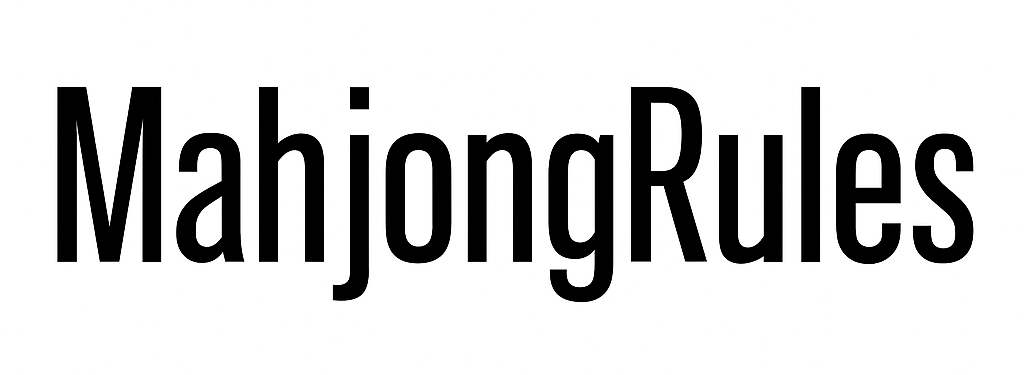So you’ve learned the tiles, you’ve survived the Charleston, and you’ve finally shouted “Mahjong!” loud enough to make your cat question its life choices.
Now comes the real question: how many points did that masterpiece just earn you?
👉 Want to practice scoring as you play?
You can test your hands — and instantly see your NMJL-based points — by playing American Mahjong on I Love Mahj. It’s the only online platform built specifically for American Mahjong, complete with the latest scoring and 2025 NMJL card integration.
Welcome to American Mahjong Scoring — the system that’s both simpler than you think and somehow still confusing enough to make you double-check the card every round. Let’s break it down before your friends accuse you of creative math.

The Golden Rule: The Card Is the Law
Forget fancy multipliers, lucky winds, or hidden bonuses. In American Mahjong, the National Mah Jongg League (NMJL) card decides everything. Every valid hand on that card has a fixed point value — usually between 25 and 85 points — and that’s your score when you win.
Think of the card as the Mahjong Constitution. You don’t question it; you just follow it. Even when it makes no sense. Especially then.
Example:
- A simple hand might net you 25 points — great for consistent wins.
- But a wild, Joker-free Singles & Pairs hand? That can be 80 points or more.
(You’ll probably only see it once every Haley’s Comet cycle, but still, nice flex.)
Why Scoring Matters (Besides Bragging Rights)
At friendly tables, points often turn into real money. Maybe it’s a nickel a point, maybe it’s just pride — but either way, knowing your hand’s worth can mean the difference between victory and “I should’ve gone with the other run.”
Scoring also affects how you choose your hand midgame. You might bail on a risky 85-pointer if a solid 25-pointer is looking more achievable. After all, Mahjong isn’t about chasing unicorns — it’s about building reliable wins.
How the Math Works (Don’t Worry, It’s the Easy Kind)
- Check your card. Find the hand you just completed.
- Read the value next to it. That’s your score.
- Smile smugly. You’ve earned it.
That’s it! No multipliers, no dice, no secret math. American Mahjong keeps it tidy.
Bonus: Some tables have fun “house rules” like:
- Doubling for winning on the last tile
- Extra points for self-drawn wins
- Or penalties if you throw the winning tile (cue the dramatic side-eye)
Just make sure everyone agrees before play starts — friendships have ended over less.
How the Money Usually Works
Here’s the classic setup most groups use:
- The winner collects the hand’s full value from each of the three players.
- Everyone else pays up, muttering something about “luck” under their breath.
- If there’s no winner (a wall game), it’s a draw. No points, no payouts, just mild disappointment.
Simple enough. Of course, different groups tweak it — so ask your table before you start. (“Wait, you triple pay for Joker swaps?!” is not a conversation you want midgame.)
An Example (Because Math Needs Context)
Say you complete this hand:
222 0000 222 5555 (Any 2s, Any 5s, Any Zeros)
That’s a 25-point hand. You call Mahjong, your friends pay you 25 points each, and suddenly you’re $0.75 richer — or just smug, depending on the stakes.
Now imagine you somehow finish a Singles & Pairs hand. No Jokers, all pure tiles, full glory. That’s 85 points, which in casual circles might earn you a round of applause, or at least a respectful groan.
Common Scoring Confusions (That Everyone’s Made)
- “Can I use a Joker here?” Not in pairs, singles, or flowers — sorry.
- “Do I get more points for going out early?” Nope. Timing doesn’t matter — only the hand does.
- “Can I make up my own hand?” Sure, but don’t expect anyone to pay you for it.
- “Does my cat count as a fifth player?” Only if it stops walking on your tiles.
The Secret Strategy of Scoring
Here’s the insider tip: smart players don’t chase high points — they chase frequent wins.
Four modest 25-point hands usually beat one elusive 85-pointer. Consistency trumps flash.
Of course, when the stars align and your jokers behave… go for glory. Nothing feels better than dropping an 80-pointer on the table and whispering, “Yes, it’s real.”
💻 Practice Scoring in Real Time
Want to see how scoring actually plays out round after round?
I Love Mahj lets you play live or solo practice rounds using the official NMJL 2025 card.
You’ll instantly see:
- How each winning hand’s points are calculated
- How scoring affects your play style over time
- Why small wins add up faster than chasing big ones
It’s the best (and easiest) way to turn your scoring knowledge into consistent wins.
The Big Takeaway
American Mahjong scoring isn’t about math — it’s about mastery.
Once you understand that every hand’s value comes straight from the card, the rest becomes second nature.
So keep your NMJL card close, your Jokers closer, and your poker face ready.
Because at the end of the day, the tiles might not always love you — but the points don’t lie.
Related American Mahjong Guides
- American Mahjong Rules Explained
- Understanding the 2025 NMJL Card
- Joker Rules, Tips & Tricks
- I Love Mahj Platform Review

